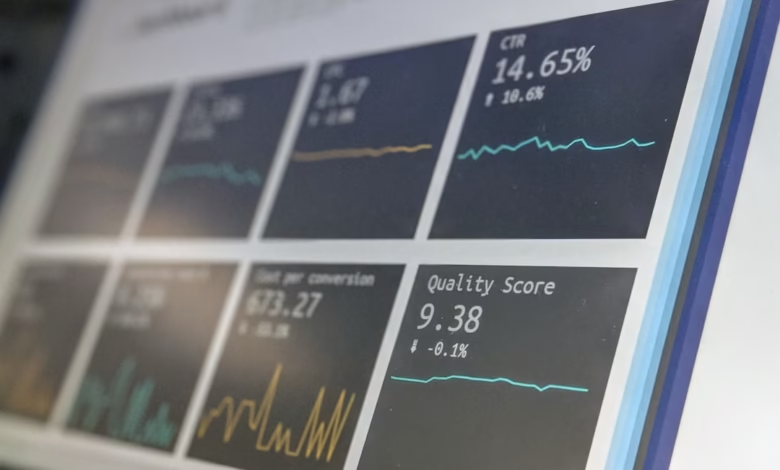Mastering Technical Analysis: Essential Chart Patterns and Strategies for Successful Trading

In the fast-paced world of trading, understanding market movements is crucial for success, whether you're engaged in stock trading, forex trading, or any other trading strategy. Technical analysis offers traders a powerful toolkit for forecasting market behavior by examining charts and patterns. This method relies on historical price data to identify trends and predict future movements, making it an essential component of trading psychology and risk management.
As we delve into the intricacies of technical analysis, we will explore key concepts and tools that can enhance your trading strategies. From essential chart patterns and indicators used in stock and forex trading to integrating technical analysis with fundamental analysis for a more comprehensive approach, this article provides a roadmap for both novice and experienced traders. Whether you're interested in day trading, swing trading, or even algorithmic trading, mastering technical analysis can significantly improve your market analysis and decision-making skills. Join us as we uncover the secrets of successful trading through the lens of technical analysis.
- 1. Understanding Technical Analysis: Key Concepts and Tools for Effective Market Forecasting
- 2. Chart Patterns and Indicators: Essential Techniques for Stock and Forex Trading
- 3. Integrating Technical and Fundamental Analysis: Crafting a Comprehensive Trading Strategy
1. Understanding Technical Analysis: Key Concepts and Tools for Effective Market Forecasting
Technical analysis is a vital tool for traders across various markets, including stock trading, forex trading, and crypto trading. It involves the evaluation of historical price data and market trends through the use of charts and patterns to forecast future market movements. Understanding the key concepts and tools of technical analysis can significantly enhance trading strategies and improve decision-making for both novice and experienced traders.
One of the fundamental elements of technical analysis is the concept of price action. Prices reflect all available information in the market, making them a critical factor in evaluating potential trading opportunities. By analyzing price patterns, traders can identify trends, reversals, and potential breakouts. Common chart types used in technical analysis include line charts, bar charts, and candlestick charts, each offering unique insights into market behavior.
Indicators play a crucial role in technical analysis, providing traders with additional data to support their trading decisions. Some popular indicators include Moving Averages, Relative Strength Index (RSI), and Bollinger Bands. These tools help traders identify overbought or oversold conditions, potential entry and exit points, and market momentum. For instance, in day trading and swing trading, moving averages can smooth out price fluctuations and reveal underlying trends.
Chart patterns, such as head and shoulders, triangles, and flags, are also essential components of technical analysis. Recognizing these patterns can help traders anticipate future price movements and develop effective trading strategies. For example, a bullish flag pattern may indicate a continuation of an upward trend, while a head and shoulders pattern could signal a potential reversal.
Risk management is another critical aspect of effective market forecasting. Traders must understand how to use stop-loss orders and position sizing to protect their capital while maximizing returns. This is particularly important in high-frequency trading and leverage trading, where the potential for significant gains comes with increased risk.
In addition to technical analysis, traders often incorporate fundamental analysis and trading psychology into their strategies. While technical analysis focuses on price movements, fundamental analysis examines economic indicators, news events, and company performance. By combining both approaches, traders can gain a comprehensive view of the market, allowing for more informed decisions.
As the trading landscape continues to evolve, online trading platforms and tools have made technical analysis more accessible than ever. From algorithmic trading and copy trading to derivatives trading and binary options, traders can leverage technology to enhance their market analysis. Whether participating in commodities trading, index trading, or energy trading, understanding technical analysis is essential for navigating the complexities of today's financial markets.
In conclusion, mastering technical analysis requires a solid grasp of key concepts and tools. By utilizing charts, patterns, indicators, and sound risk management techniques, traders can develop robust trading strategies that improve their chances of success in various trading environments.
2. Chart Patterns and Indicators: Essential Techniques for Stock and Forex Trading
Chart patterns and indicators are essential techniques for traders looking to forecast market movements in various financial markets, including stock trading, forex trading, and crypto trading. By understanding these tools, traders can make informed decisions based on visual representations of market data.
Chart patterns are formations created by the price movements of a security over time. These patterns can signal potential future movements and are critical for both day trading and swing trading strategies. Some common chart patterns include head and shoulders, double tops and bottoms, triangles, and flags. Recognizing these patterns can help traders identify entry and exit points, ultimately enhancing their risk management strategies.
In addition to chart patterns, various technical indicators can provide further insights into market conditions. Indicators such as moving averages, Relative Strength Index (RSI), and Bollinger Bands are widely used in markets ranging from commodities trading to options trading. For instance, moving averages can help smooth out price data to identify trends over a specific period, making them invaluable for long-term trading strategies like trend following.
Combining chart patterns with indicators enhances market analysis by allowing traders to validate their predictions. For example, a bullish chart pattern, such as a breakout from a triangle, can be confirmed by an increase in volume or a favorable RSI reading. This layered approach is beneficial for both algorithmic trading and high-frequency trading, where precision is paramount.
Moreover, understanding trading psychology is crucial when interpreting chart patterns and indicators. Traders must remain disciplined and avoid emotional decision-making, especially when engaging in fast-paced strategies like scalping or margin trading. This awareness can significantly impact their overall trading performance and risk management.
In summary, mastering chart patterns and technical indicators is fundamental for traders in stock trading, forex trading, and beyond. By incorporating these techniques into their trading strategies, traders can enhance their ability to forecast market movements and make informed decisions across various trading platforms.
References:
– Murphy, J. J. (1999). Technical Analysis of the Financial Markets. New York, NY: New York Institute of Finance.
– Elder, A. (1993). Trading for a Living: Psychology, Trading Tactics, Money Management. New York, NY: Wiley.
– Van K. Tharp, J. (2013). Trade Your Way to Financial Freedom. New York, NY: McGraw-Hill.
3. Integrating Technical and Fundamental Analysis: Crafting a Comprehensive Trading Strategy
When it comes to crafting a comprehensive trading strategy, integrating technical and fundamental analysis is essential for traders across various markets, including stock trading, forex trading, and crypto trading. While technical analysis focuses on chart patterns and market movements, fundamental analysis examines the underlying factors that influence asset prices, such as economic indicators, company earnings, and geopolitical events.
By combining these two approaches, traders can enhance their market analysis and make more informed decisions. Here are some key points to consider when integrating technical and fundamental analysis into your trading strategy:
– **Understanding Market Sentiment:** Technical analysis can help identify short-term market trends and price movements, while fundamental analysis provides insights into the overall market sentiment. By understanding both aspects, traders can better gauge the potential direction of an asset, whether in day trading, swing trading, or scalping.
– **Timing Entries and Exits:** Utilizing technical indicators and chart patterns can assist traders in determining optimal entry and exit points. When these signals align with fundamental data—such as positive earnings reports or favorable economic news—traders can increase their confidence in executing trades, whether in options trading, futures trading, or commodities trading.
– **Risk Management Strategies:** Integrating both analyses allows traders to develop comprehensive risk management strategies. By assessing the fundamental outlook of an asset, traders can set stop-loss orders and leverage trading appropriately to protect their capital. This is especially crucial in high-frequency trading and algorithmic trading, where rapid decisions must be made.
– **Enhancing Trading Psychology:** Understanding the fundamental factors that drive market movements can help traders maintain a disciplined approach to trading psychology. Awareness of external influences can reduce emotional decision-making during market fluctuations, especially important in the volatile realms of binary options and derivatives trading.
– **Adapting to Market Conditions:** As market conditions change, the relevance of technical or fundamental analysis may vary. For instance, during earnings season in stock trading or significant geopolitical events in forex trading, fundamental analysis may take precedence. Conversely, in stable markets, technical analysis might provide clearer signals for entry and exit points.
In conclusion, the integration of technical and fundamental analysis is a powerful approach for traders in various disciplines, including index trading, energy trading, and CFD trading. By understanding the dynamics of both analyses, traders can develop robust trading strategies that not only enhance their market analysis but also improve their overall trading performance while managing risk effectively. This holistic approach is vital for both novice and experienced traders seeking long-term success in the ever-evolving landscape of online trading platforms.
References:
– Murphy, J.J. (1999). Technical Analysis of the Financial Markets. New York: New York Institute of Finance.
– Pring, M.J. (2002). Technical Analysis Explained. New York: McGraw-Hill.
– Graham, B., & Dodd, D.L. (2008). Security Analysis: Principles and Techniques. New York: McGraw-Hill.
In conclusion, mastering technical analysis is essential for anyone engaged in trading, whether it's stock trading, forex trading, or even crypto trading. By understanding key concepts and utilizing chart patterns and indicators, traders can gain valuable insights into market movements, enhancing their ability to make informed decisions. Furthermore, integrating technical analysis with fundamental analysis allows for a more comprehensive trading strategy, catering to diverse styles like day trading, swing trading, and scalping.
As you develop your trading strategies, remember the importance of risk management and trading psychology in achieving long-term success. Whether you're exploring algorithmic trading, high-frequency trading, or engaging in derivatives trading and margin trading, a solid grasp of technical analysis will undoubtedly benefit your approach. With the right knowledge and tools at your disposal, you can navigate the complexities of online trading platforms, optimizing your performance in various markets, including commodities trading, index trading, and energy trading.
Stay adaptable, continually refine your skills, and leverage the insights gained through technical analysis to enhance your trading journey. By doing so, you position yourself for success in the ever-evolving landscape of trading.
References:
[Include relevant sources here]




